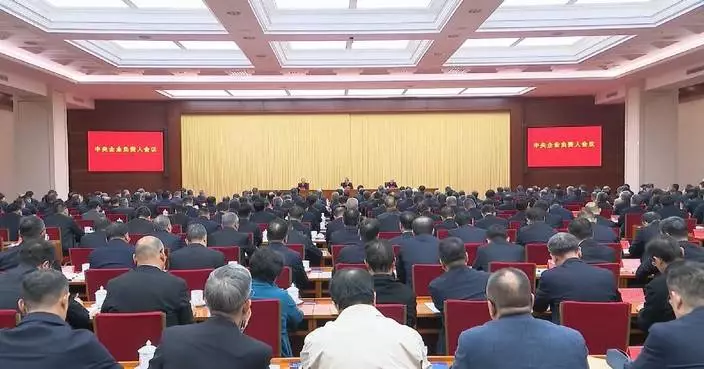A new U.S. plan to impose millions of dollars in fees on Chinese ships is unlikely to succeed in reviving America's diminished shipbuilding sector, according to industry analysts.
The United States is considering fees of up to 1.5 million U.S. dollars on Chinese-made ships or vessels from fleets containing Chinese-built ships docking at U.S. ports. The move, reportedly part of a draft executive order by President Donald Trump, aims to revitalize the American shipbuilding sector, which currently accounts for only 0.1 percent of the global market.
The proposed fees follow a Section 301 investigation launched last year by the U.S. Trade Representative into China's alleged "unfair economic activities." The action has already drawn strong criticism from China.
Given more pressing concerns in sectors like automotive and semiconductors, the focus on shipbuilding raises questions about the administration's true motivations,
"The first aspect is that the United States is facing significant financial difficulties and needs to increase its revenue. Therefore, it has utilized all possible channels to boost its income. The second aspect is related to geopolitical considerations. The U.S. aims to control the world’s major shipping routes and key ports," said Huang Renwei, executive dean of the Fudan Institute for Belt and Road and Global Governance, noting that this involves restricting the global maritime activities of its strategic competitors, especially China.
This isn't the first attempt by the U.S. to bolster its domestic shipping industry through protectionist measures. The Jones Act, enacted in the 1920s after World War I, mandated that goods shipped between U.S. ports be transported on U.S.-built, -owned, and -operated vessels. While intended to revitalize the industry, the law was criticized for stifling competition, leading to higher prices and reduced innovation.
The disparity between U.S. and Chinese shipbuilding capacity is stark. In 2023, U.S.-made commercial ships comprised only 0.1 percent of the global total, compared to China's nearly 50 percent. U.S. shipbuilding capacity is less than one million tons, dwarfed by China's 40 million tons. Furthermore, U.S. labor costs are four times higher, and the industry faces a fragmented supply chain and outdated infrastructure.
Experts suggest that a genuine revival of U.S. shipbuilding would require significant investment and effort.
"If the United States wants to become a leader in commercial shipbuilding, that's going to take a lot of effort to rehabilitate shipbuilding yards, but also to train an army of workers who currently, maybe some years ago they used to work in the shipbuilding, but those skill sets have perhaps long been forgotten," said John Anthony Quelch, a British-American academic.
The proposed fees may shift public attention away from urgent domestic problems, but history has shown that monopolizing an industry by excluding competitors can only backfire in the end, according to experts.

Experts doubt viability of U.S. plan to revive shipbuilding by targeting China









